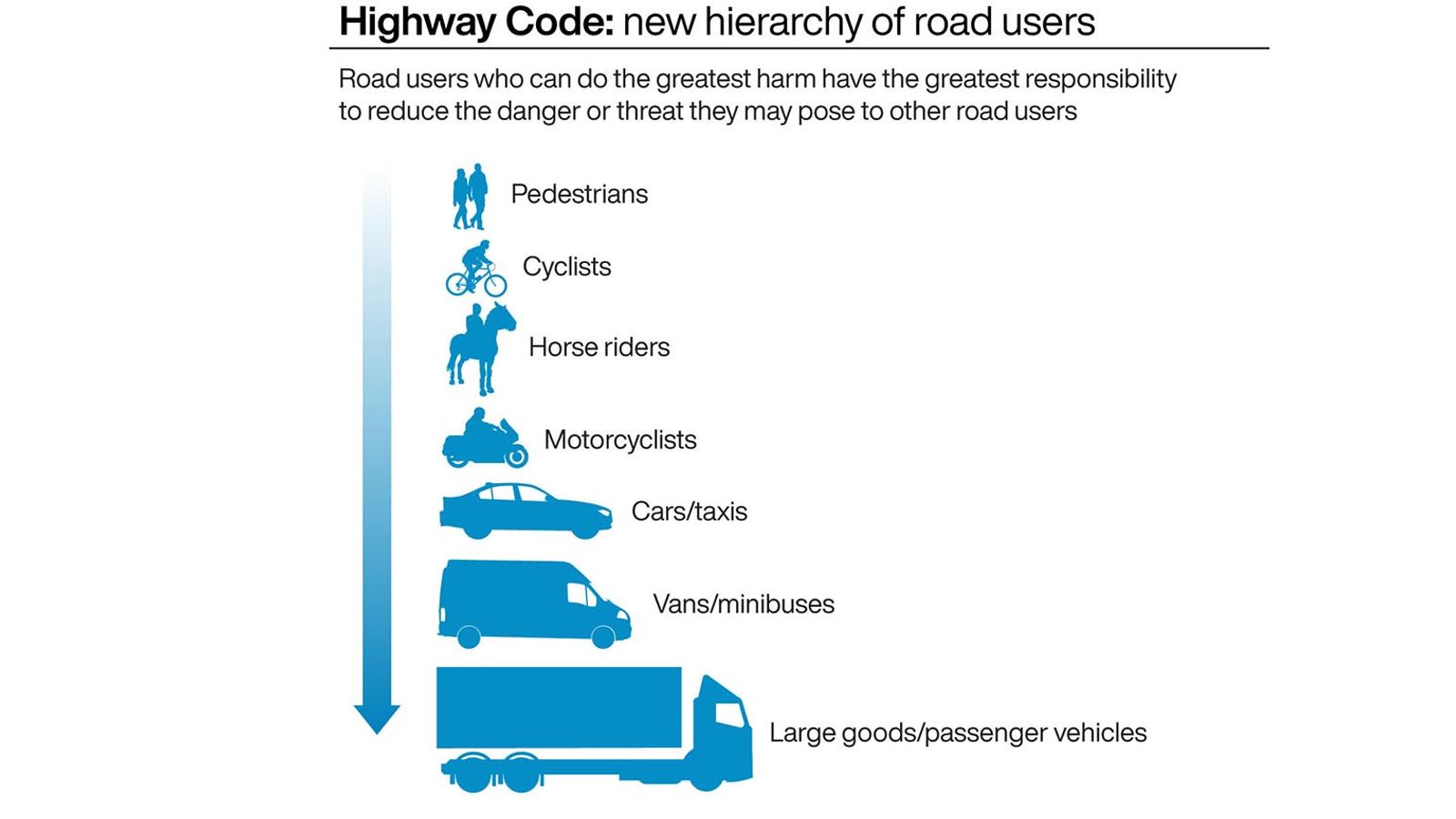Highway Code: Everything you need to know as road rules change from Saturday 29th Jan
A major overhaul of the Highway Code came into effect on Saturday 29th January in a bid to improve road safety for cyclists and pedestrians.
The new guidance includes a hierarchy of road users – with drivers expected to be aware of cyclists, pedestrians and horse riders.
Nine sections of the code have been updated with 50 rules added or amended – including motorists now expected to give way to people crossing or waiting to cross at a junction.
Here, we have outlined everything you need to know about the new Highway Code guidance.
The rules are advisory so failing to comply will not result in a fine.
It comes as an AA survey of 13,700 people found 33% were unaware of the changes, announced earlier this month – while 4% said they had “no intention” of reading them.
“Drivers will have to make their own judgements on what they should do in the scenarios they find themselves in,” AA president, Edmund King, said.
He tweeted on Friday: “Most people seem to understand it is about common sense, common courtesy and hopefully will bring a common cultural change.”
1 Road hierarchy
People facing the greatest risk in the event of a collision – pedestrians and cyclists – will be prioritised above motorists, who have the most responsibility to consider others.
However, the new rules do not “remove the need for everyone to behave responsibly”.

2 Crossing junctions
Motorists and cyclists should give way when pedestrians are crossing or waiting to cross at a junction.
Traffic must give way to people on zebra crossings and also parallel crossings – which include a cycle route alongside the black and white stripes.

3 Walking, cycling or riding in shared spaces
Cyclists should not overtake pedestrians or horse-riders closely or at high speed in shared spaces.
They should try and alert others of their presence, for example by ringing the bell, and anticipate people could be deaf, blind or partially sighted.
People walking should take care not to obstruct pathways.
4 Cyclist positioning
Cyclists should make themselves as visible as possible by riding in the centre of their lane on quiet roads, in slower-moving traffic and when approaching junctions.
The guidance suggests it can be safer to ride “two abreast” or side by side, particularly when accompanying children or people with less experience.
Cyclists should be considerate of other road users particularly when in riding in groups.
The updated code explains they should exercise caution when passing parked vehicles, leaving around 1m to avoid being hit if a car door opens.
5 Opening car doors
Drivers and passengers should open doors using their hand on the opposite side – for example their left hand to open a door on their right.
The technique, known as the Dutch Reach, encourages people to turn their head and look over their shoulder – reducing the chance of a door opening in the path of others.
6 Roundabouts
Motorists should give priority to cyclists, horse riders and people driving horse-drawn vehicles and should not try to cut across their lane.
7 Overtaking
Drivers overtaking more vulnerable road users should leave at least 1.5 metres (5ft) when travelling at speeds of up to 30mph.
More space should be given when driving at higher speeds.
At least two metres distance should be left when passing people walking in the road, such as when there is no pavement.
8 Overtaking cyclists at junctions
Cyclists going straight ahead at a junction have priority over traffic waiting to turn into or out of a side road, unless road markings indicate otherwise.
9 Charging electric vehicles
Motorists should park as close as possible to public charging points to avoid creating a trip hazard from trailing cables.